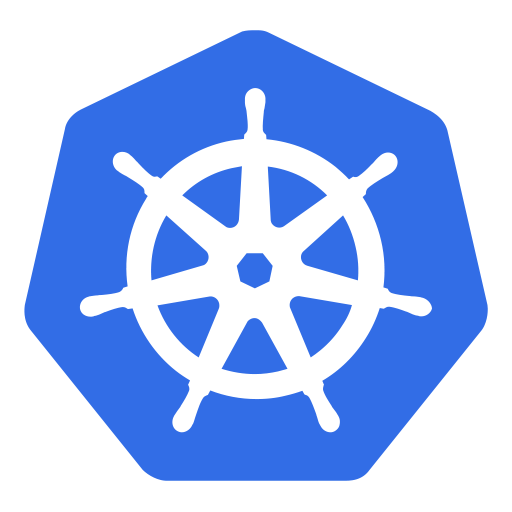Kubernetes & DevOps: A Perfect Pair?

Content Map
More chaptersDevOps and Kubernetes are two powerful forces in the world of software development. The relationship between DevOps and Kubernetes is an interesting one. Unfortunately, there are many misconceptions about the two, with people thinking that they’re either trying to replace each other or that they can’t exist without each other. On the contrary, the two work together to help organizations deploy applications more quickly and reliably than before. This article will go through the benefits of Kubernetes DevOps and how you can use them together to improve your company’s operations for maximum success.
What Is DevOps? - DevOps Recap
DevOps is the combination of two parts: Development and Operations. It provides a framework to bridge the gap between software developers and system administrators. The goal of DevOps is to move closer to constant evolution, where new developments are released often, and upgrades can be done without any service disruption. By breaking down the traditional barriers between development and operations, it became possible to deliver valuable software at a much faster rate.
DevOps adds collaboration between the two disciplines to improve efficiency. So, it’s more of a culture than a specific set of tools or processes, but some critical technical practices arise out of the DevOps culture.
What is Kubernetes, and how does it work?
Kubernetes is an open-source platform designed to automate the deployment, scaling, and management of containerized applications. It’s a portable, extensible, and self-healing system at the same time. Google created Kubernetes, and the Cloud Native Computing Foundation now maintains it. The idea behind Kubernetes was to develop a platform that has all of the required capabilities for managing containerized apps and abstracts them away from the underlying infrastructure. The Kubernetes cluster management system can be run on public, private, or hybrid clouds.
To use Kubernetes for managing container-based applications, developers and IT admins must use DevOps practices to fill in the gaps. For example, the manager of an app deployment needs to configure all available resources such as storage, networking, and computing before running applications. Also, they need to monitor the right set of metrics for each application so that their tasks can be automated using a tool like Kubernetes.
Kubernetes has a large community of users and contributors, which ensures the stability and security of this platform. It is quickly evolving as new needs arise from its impressive user base. Due to its popularity and large community, many DevOps tools and projects integrate with Kubernetes. Whether you need a CI/CD solution or a new monitoring system, likely, there is already a tool that fits your needs.
The Benefits of Kubernetes DevOps in Software Development Cycle
Kubernetes is an open-source platform built by Google that manages containerized applications across multiple hosts. Since its launch, it has continued to be adopted by more companies across various industries, including telecommunications, retail, media, healthcare, etc.
This is because containerization is gaining popularity due to its ability to help with the portability, maintainability, and scalability of applications. On top of that, Kubernetes is an excellent choice for managing containerized apps because it offers many benefits in the DevOps best practice.
Kubernetes provides the ability to effectively manage application containers
One of the notable benefits of Kubernetes is its ability to manage the application containers required by multiple applications. Kubernetes does this through features like deployments, which are used to manage one or more containerized apps on the same host. The replication controller allows you to set up a specified number of pods and deploy them across different hosts. Services ensure that these replicated pods remain available even when a node goes down.
Kubernetes also ensures the high availability of containerized apps to scale containers up and down while ensuring their availability through features like restarts, auto-repairing, and auto-scaling. In addition, it offers a unique feature called Jobs, which is used to facilitate long-running batch tasks.
Kubernetes helps you streamline your application development process
Another notable benefit of Kubernetes is its ability to simplify the application development process by providing an environment where developers can quickly develop, test, and deploy their containerized apps.
It allows users to share application containers through tools like Docker, which they can use to build and share containers across different development teams.
In addition, Kubernetes provides a self-service platform where developers can easily manage their containerized apps without requiring any assistance from administrators or DevOps engineers.
Kubernetes helps you improve infrastructure utilization by leveraging the full power of the cloud infrastructure
Companies frequently struggle with a lack of infrastructure utilization, increasing costs and negatively impacting business operations. Luckily, Kubernetes helps solve this problem by providing your containerized apps on-demand, right from the self-service platform mentioned above. This improves resource utilization and reduces costs for businesses.
Kubernetes provides a common development and continuous deployment environment
Kubernetes provides a common infrastructure to all development teams within an organization to easily collaborate during the DevOps processes of developing, testing and deploying containerized apps.
This enables developers to reuse resources across different projects, eliminating the need to create their own individual environments for each new project or app they are working on.
Kubernetes also simplifies the software’s continuous delivery by allowing you to bring apps from development into the production environment with minimal downtime and without affecting existing app availability.
Kubernetes Features
Kubernetes is an open-source implementation of container cluster management that has become very popular lately, especially since Google launched it. Initially designed for the Google compute engine environment, Kubernetes is now used by many software companies to manage containers across large container clusters of computing power. The most critical features of Kubernetes are the following:
Portability
Kubernetes can manage stateless and stateful applications across many different platforms, such as bare metal, virtual machines, OpenStack, and public [cloud services](/services/cloud-computing/) like AWS and Azure.
Scalability
Users can easily add computing power to Kubernetes clusters by running more containers on more machines.
High availability
Kubernetes has mechanisms to recover from node failures and ensure that containers keep running despite such events, providing the high availability of applications.
Dynamic configuration
Users can easily update container resource requests and limits through an online RESTful API and use the same configuration file across many data centers.
Extensibility
Kubernetes has an extensive API that can be used to interact with any part of the operating system, including storage and networking components.
Why Should You Use Kubernetes In DevOps?
Kubernetes has become a widely adopted platform for deploying containerized applications, and more and more software companies are considering Kubernetes due to its benefits, as we mentioned above. However, if you are still wondering, then let’s remind you of some of the notable reasons below:
- Kubernetes helps scale containers dynamically, update existing apps without downtime, and run multiple apps on a single machine. It also makes the continuous deployment process simpler and faster by abstracting away all the underlying complexities of containerization from developers. In addition to that, it allows easy management of various containerized apps running on a single machine.
- Kubernetes also enables the usage of a shared pool of workers, which means users from different teams can share resources and distribute workloads.
- Kubernetes is a system allowing you to automate deploying, scaling, and operating containerized apps. It provides declarative configuration so you can easily manage your containerized services. It’s also extensible, so you can add plug-ins to suit whatever level of automation you need. You can install Kubernetes on-premises, private clouds, or public clouds such as Amazon Web Services (AWS Resources), Microsoft Azure, and other platforms.
- Kubernetes is also open-source software that’s free to use and download.
The future of DevOps and Kubernetes
Kubernetes has already started to gain traction in the market, with many companies like Microsoft Azure, IBM Bluemix, HPE Helion, etc., embracing it for container management. Kubernetes is quickly becoming a standard for cloud-native applications, which are easier to deploy and manage. Therefore, it enables organizations to run containerized workloads at scale.
The future of DevOps is highly dependent on the high demand for microservices-based applications, which will result in an increased need for automation. Kubernetes is set to help companies with their software development process by automating container management and scaling containerized apps.
Conclusion

DevOps and Kubernetes have been gaining popularity for years. DevOps is the software development approach that unifies software development with operations, while Kubernetes is an open-source container orchestration system initially developed by
Google to manage containers at scale. DevOps makes it easier to deploy new features without affecting existing functionalities or stability - something which can be especially valuable when working on complex projects where different teams may need access to code simultaneously.
In conclusion, DevOps and Kubernetes are a powerful pair that offers many benefits to engineers and developers. DevOps focuses on the software development life cycle, while Kubernetes primarily manages containers at scale. Their functionality complements one another nicely, which is why many DevOps teams are now embracing Kubernetes DevOps to optimize their workflows.







